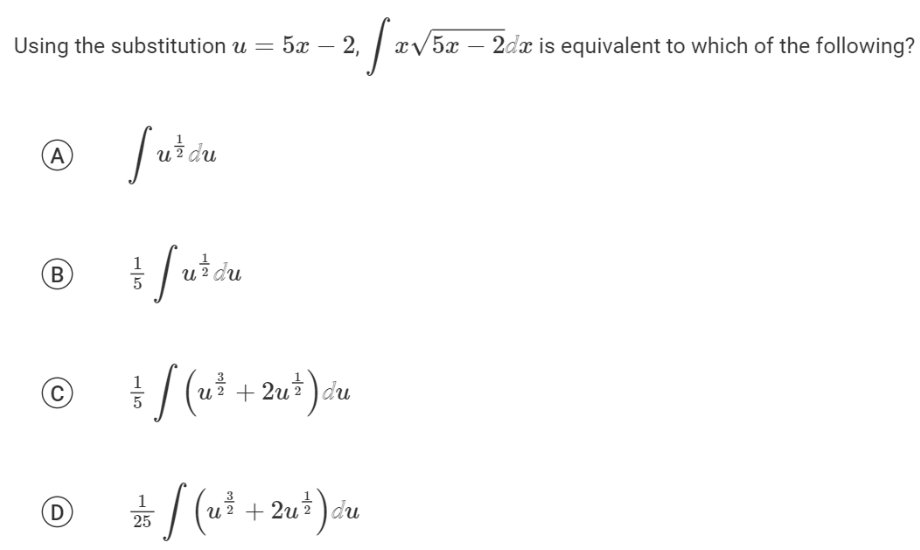Some u-sub stuff I love
MY VERSION:
I love working on u-substitution problems with my students, and it is the first method of more advanced integration that they encounter, followed shortly by integration by long division, partial fractions, parts, and completing the square. I find that u-sub is the most applicable to a variety of questions and appears more frequently on the AP exam.
After they watch my video notes and practice various indefinite integrals involving u-substitution, we move to definite integrals involving u-substitution. I use the “Uganda” mnemonic to help them remember to translate the ENITRE integral to “u-talk.” Some of them eventually figure out that you don’t actually have to translate the limits of integration to ‘u’ -they can just integrate, go back to x, and then use the original ‘x’ limits of integration. To discourage them from relying solely on this method, I have them do this PDF of a Jamboard of newer MC questions from the AP exam that require students to understand how to fully translate to ‘u.’ I point out that the following recent question doesn’t even require integrating!
We also practice several questions like the following, where again, students don’t necessarily need to integrate. They just need to translate an integral in a less obvious way. This was on one of the progress checks and a LOT of my students missed it at first:
My favorite half-sheet is this “u-sub or not?” set of problems. After letting them attempt these in their groups for about 10 minutes, I let them know how many “no’s” they should have. Almost everyone will have too many “no’s,” so then I give groups time to scour through the 10 integrals again and figure out which are in fact integrable. They almost always forget about inverse trig at first.
PDF of the above U-SUB OR NOT problem set.
Here is another half-sheet that they tape in their notebooks. I finally updated it this year to include more recent styles of MC questions seen on the exam.
After taking a quiz or test involving u-sub questions, I like to create a worksheet of incorrect attempts inspired by their incorrect answers. This is the one I created for this year. I challenged them to find and circle at least 4 errors on each attempt. I then had students share out what they found. I love listening to groups as they go through these, partly to hear them marvel at how difficult grading is (FACTS), and partly to hear just how much they have improved their notation in just the past week or so.






